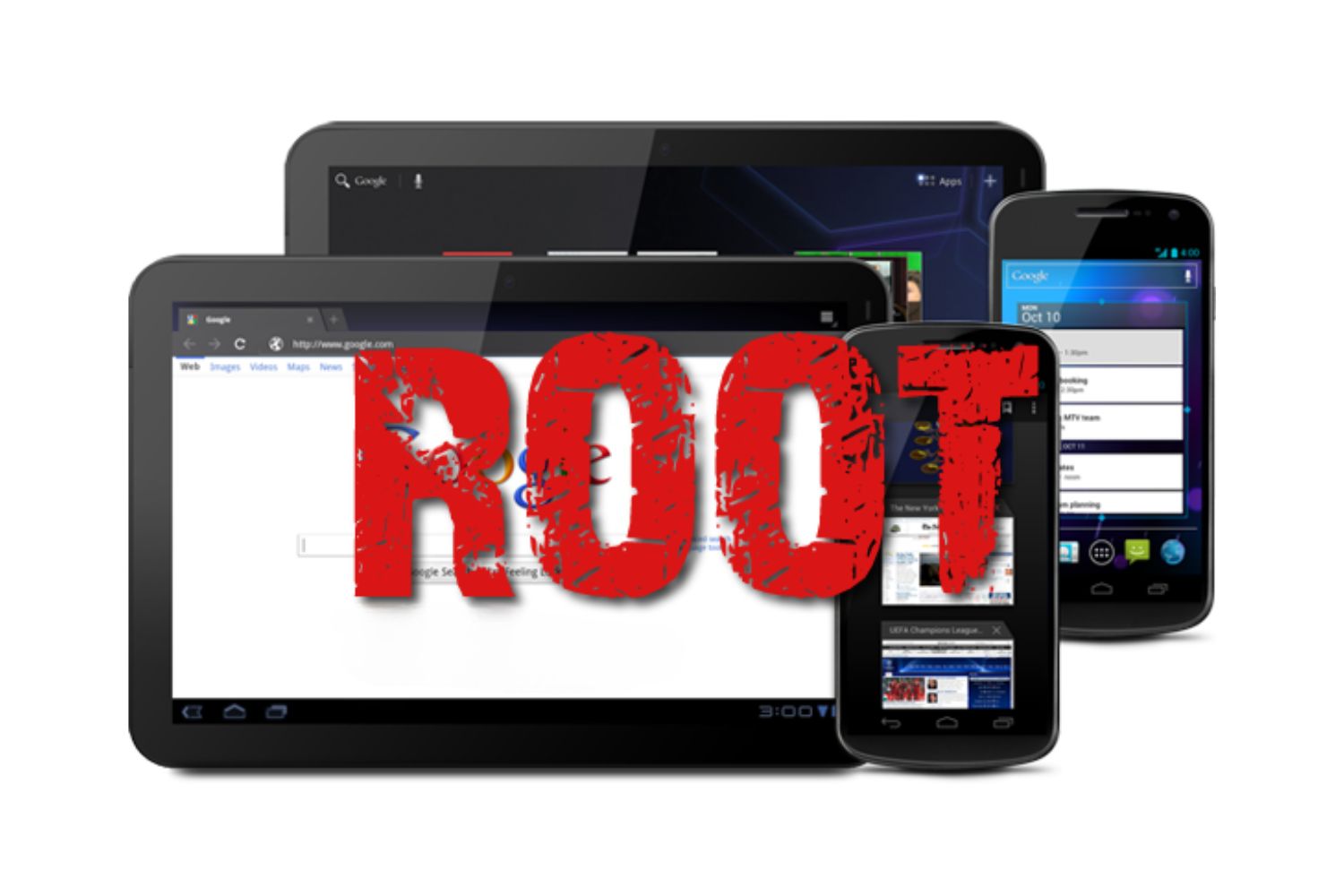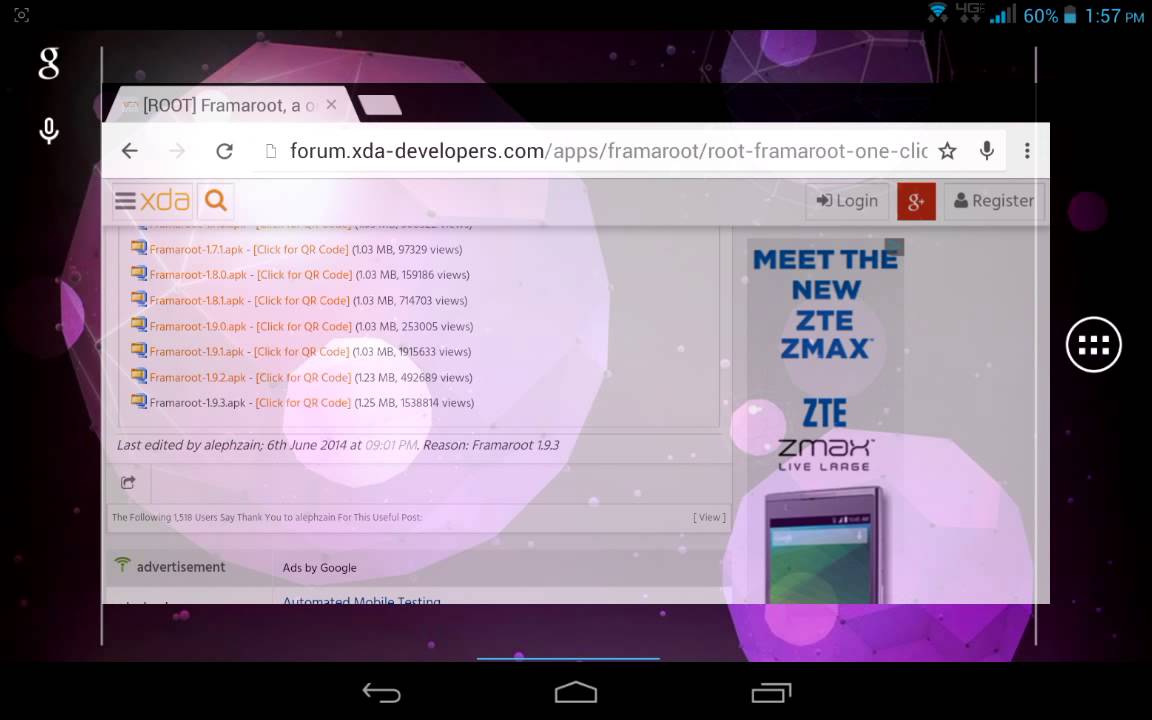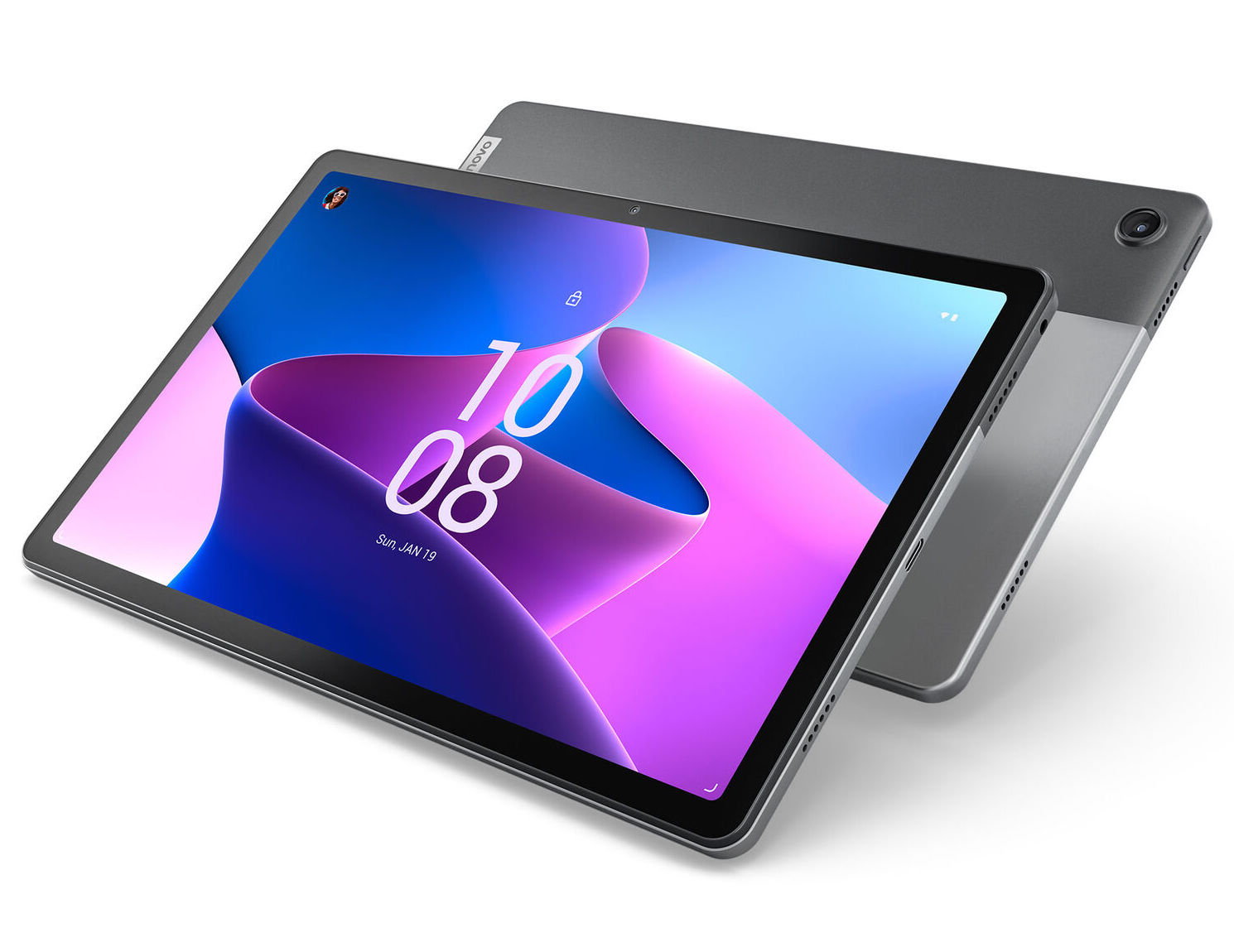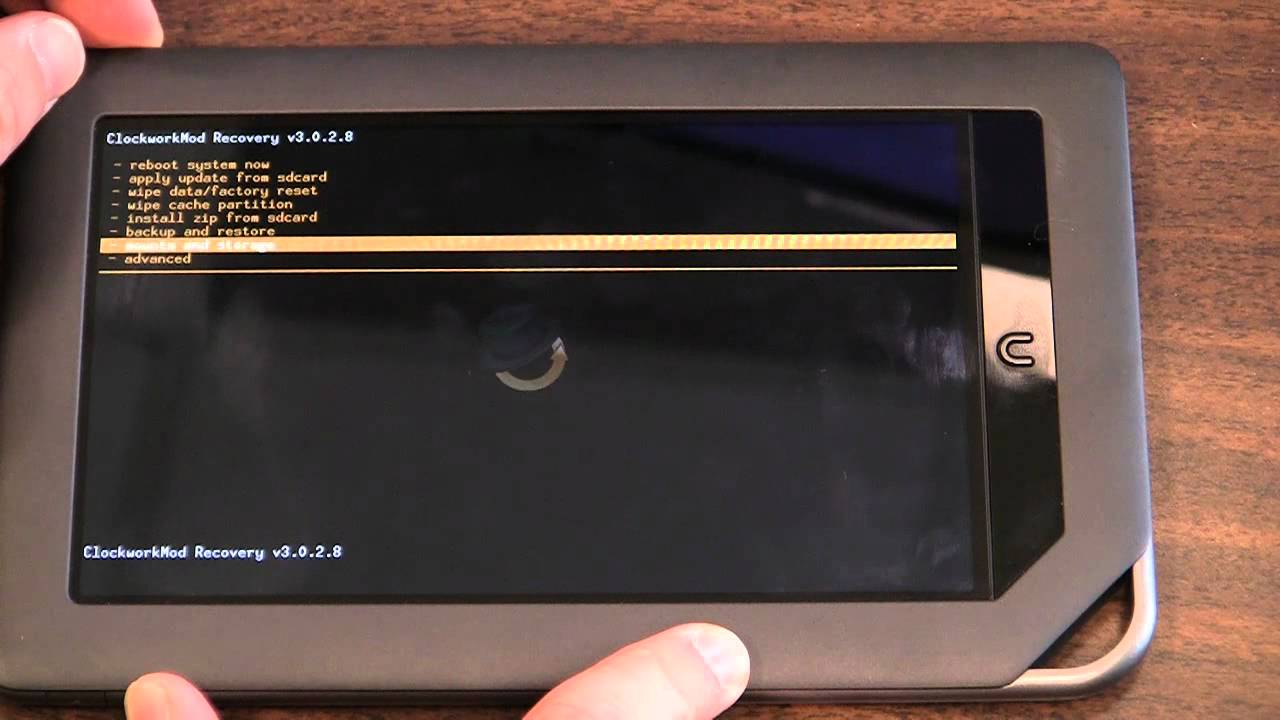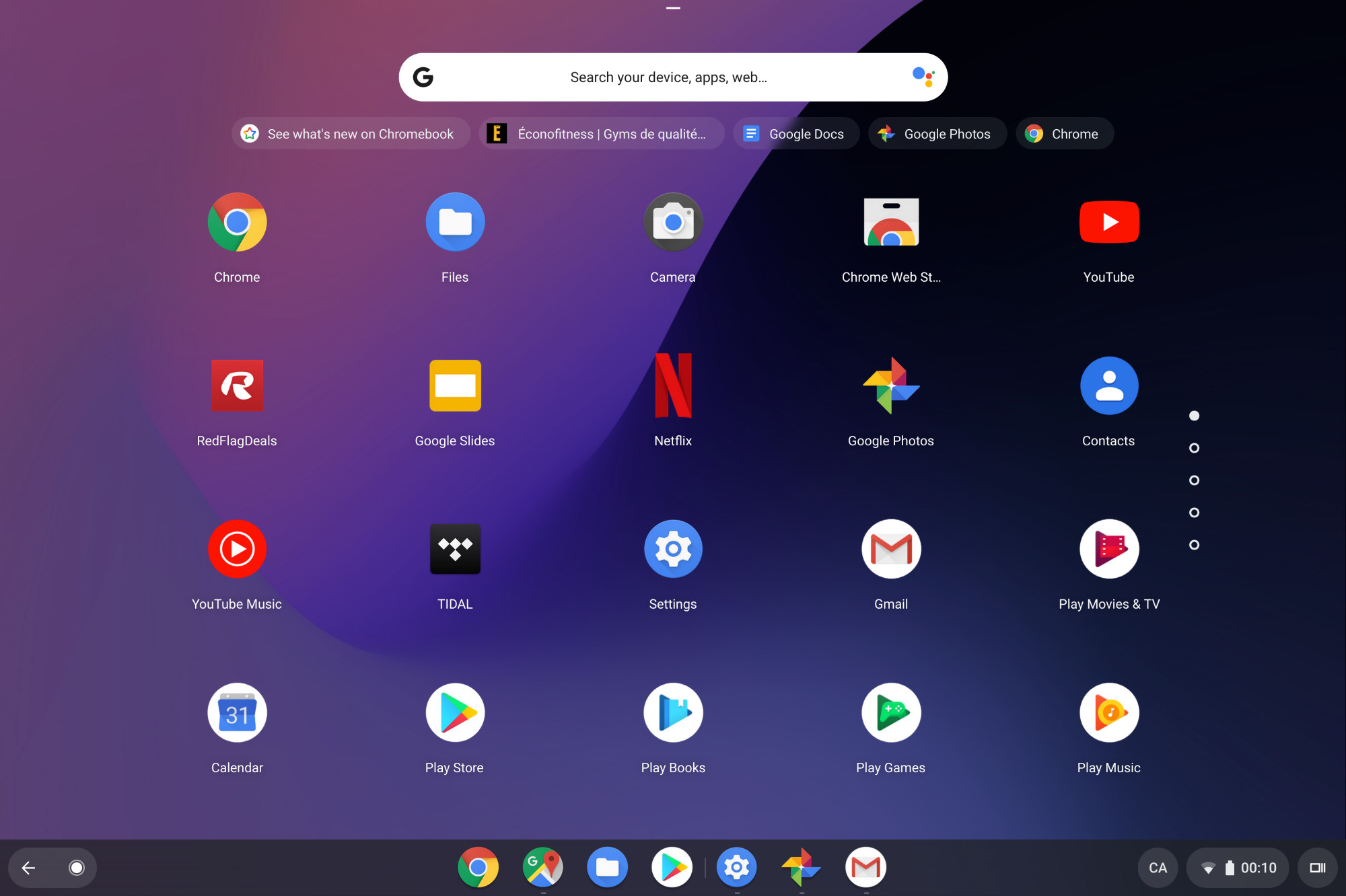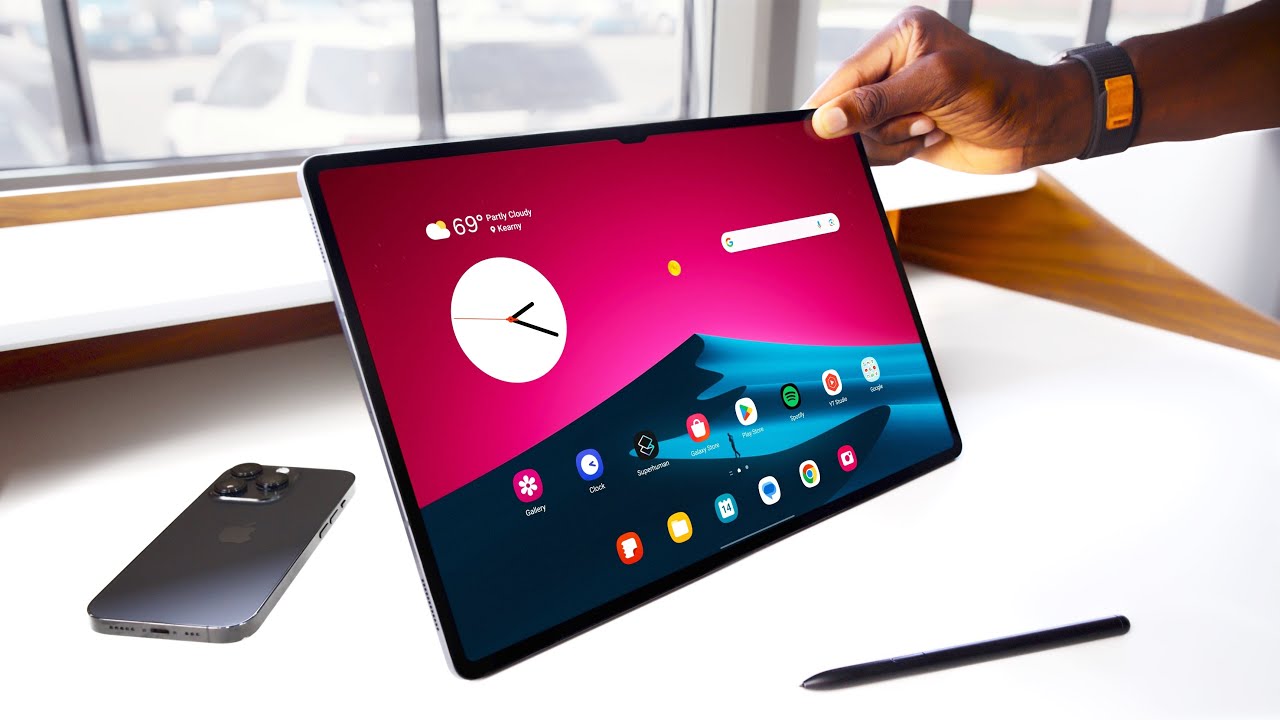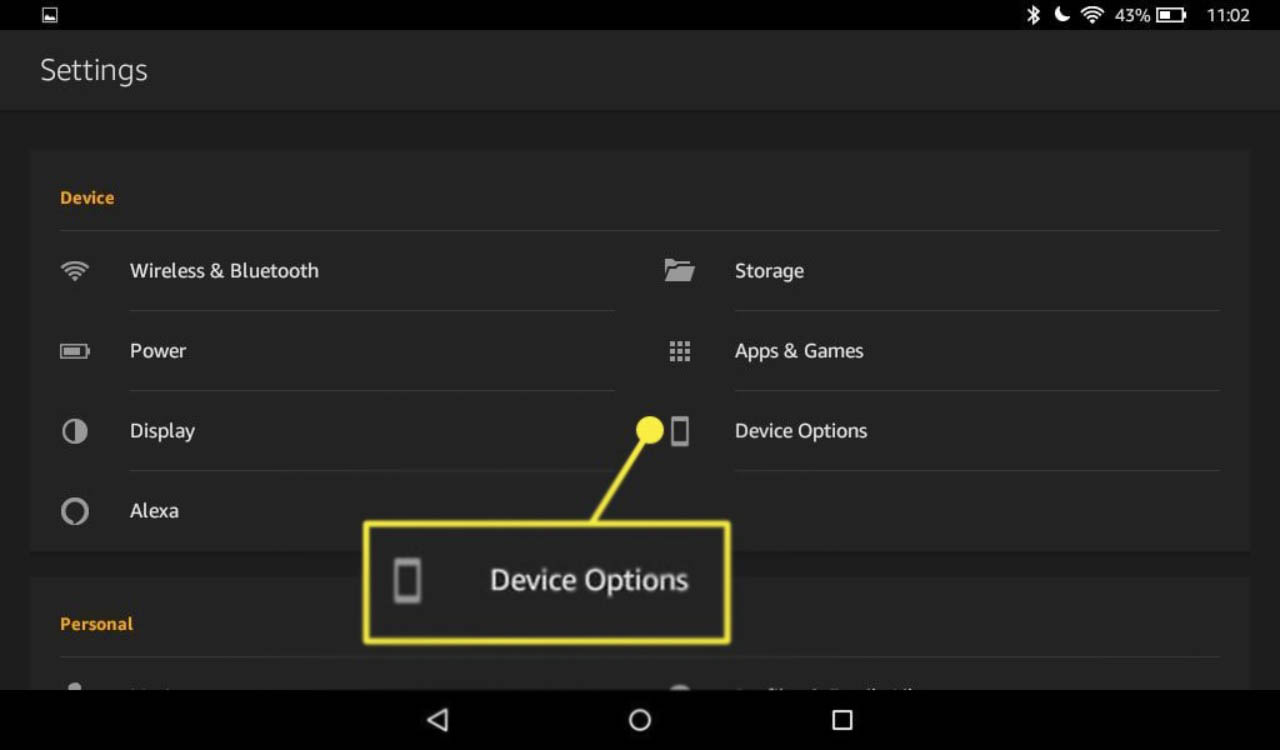Introduction
Are you looking to unleash the full potential of your tablet? Have you heard the term “rooting” but aren’t sure what it entails? In this article, we will explore the concept of rooting and why it might be beneficial for your tablet experience.
Rooting refers to the process of gaining privileged access to the Android operating system that runs on your tablet. By rooting your tablet, you can elevate your user permissions to access system files and settings that are typically off-limits. Think of it as gaining administrative control over your device, similar to having the “root” access on a computer.
So why would you want to root your tablet? Well, there are several benefits that come with rooting, and it can transform your tablet from a locked-down device to a customizable powerhouse. Whether you are an avid techie or just a casual user, rooting can offer a host of advantages that can enhance your tablet experience to a whole new level.
What is rooting?
Before diving into the benefits of rooting, let’s first understand what rooting actually means. Rooting is the process of gaining root access to the Android operating system on your tablet. It allows you to have privileged control over the device, enabling you to modify system settings and access system files that are otherwise restricted.
When you root your tablet, you are essentially breaking the barriers that manufacturers have put in place to limit your control over the device. It’s similar to the concept of jailbreaking in iOS devices. By gaining root access, you obtain administrative privileges, akin to having “superuser” permissions.
Rooting can be compared to owning a house. When you buy a house, you have certain limitations imposed by the builder, such as the design and layout of the rooms. However, once you become the owner, you can customize and modify the house to your liking. Similarly, by rooting your tablet, you become the owner of your device, giving you the freedom to personalize it as you see fit.
Rooting can be done using various methods, depending on the tablet model and the version of the Android operating system. However, it’s important to note that the process of rooting may void your warranty and carry certain risks if not done correctly. Therefore, it’s crucial to thoroughly research and follow reliable guides or seek professional assistance to ensure a smooth and safe rooting process.
Now that you have a clear understanding of what rooting is, let’s explore the benefits it brings to the table and why you might want to consider rooting your tablet.
Benefits of Rooting Your Tablet
Rooting your tablet provides a range of benefits that can greatly enhance your overall tablet experience. Here are some key advantages to consider:
1. Customizing Your Tablet: Rooting allows you to customize every aspect of your tablet’s software and appearance. You can install custom themes, change fonts, and personalize the user interface to reflect your unique style and preferences.
2. Installing Custom ROMs: By rooting your tablet, you can install custom ROMs (Read-Only Memory) that are modified versions of the Android operating system. Custom ROMs often provide additional features, improved performance, and the latest Android updates, regardless of whether your manufacturer supports them or not.
3. Removing Pre-installed Bloatware: Manufacturers often load tablets with pre-installed apps, also known as bloatware, that you may not use or want. Rooting gives you the ability to remove these unwanted apps and free up valuable storage space, resulting in a cleaner and more efficient tablet.
4. Boosting Performance: Rooting allows you to optimize your tablet’s performance by utilizing tools and apps that are specifically designed for rooted devices. You can overclock the processor, control the CPU frequency, and tweak other system settings to maximize speed and responsiveness.
5. Unlocking Hidden Features: Some manufacturers hide certain features or settings that they deem unnecessary or advanced for the average user. By rooting your tablet, you can access and unleash these hidden features, allowing you to take full advantage of your device’s capabilities.
6. Removing Ads: Many free apps display advertisements, which can be intrusive and disrupt your user experience. By rooting your tablet, you can eliminate these ads by installing ad-blocking software, ensuring a cleaner and ad-free browsing and app usage.
7. Accessing and Controlling System Settings: Rooting gives you unparalleled access and control over system settings that are typically inaccessible to regular users. You can fine-tune various aspects of your tablet’s performance, battery life, and more, providing a level of customization and optimization not available on unrooted devices.
These are just a few of the many benefits that rooting can offer for your tablet. It’s important to note, however, that rooting does come with certain risks and drawbacks, which we will explore further in the next section.
Customizing Your Tablet
One of the major benefits of rooting your tablet is the ability to fully customize its software and appearance according to your preferences. When you root your tablet, you open up a world of possibilities for customizing every aspect of the device to reflect your unique style and needs.
With a rooted tablet, you can install custom themes that completely transform the look and feel of your device. Whether you prefer a sleek, minimalistic design or a vibrant and colorful interface, there are countless themes available to suit your taste. You can change the icons, wallpapers, system fonts, and even the status bar to create a truly personalized and visually appealing tablet experience.
In addition to themes, rooting also enables you to use various customization apps and tools that are specifically designed for rooted devices. These apps give you granular control over different aspects of the user interface, allowing you to tweak animations, adjust the size and layout of icons, and customize the navigation bar to your liking. You can even modify the system colors and choose your own color schemes for different elements of the interface.
Furthermore, rooting opens up the possibility of installing custom keyboards, fonts, and boot animations. You can choose from a wide range of keyboard styles and layouts to enhance your typing experience, customize the fonts to match your preference, and even replace the boring default boot animation with something more visually appealing or unique.
But the customization options don’t stop there. When you root your tablet, you gain access to a plethora of Xposed Framework modules. Xposed Framework is a powerful tool that allows you to apply system-level modifications and tweaks without flashing custom ROMs. You can use Xposed modules to add new functionality, enhance existing features, and customize various aspects of your tablet’s software in ways that were previously unimaginable.
It’s important to note that while customization is a significant advantage of rooting, it’s essential to exercise caution and have proper knowledge before making any changes to the system. Making incorrect modifications or installing incompatible themes or modules can potentially lead to instability or even render your tablet unusable. Therefore, it’s always advisable to research thoroughly, follow reliable guides, and take necessary backups before diving into the world of customization.
In summary, rooting your tablet allows you to unleash your creativity and customize your device in ways that go beyond what’s possible on an unrooted device. Whether you want to change the entire look of your tablet or fine-tune specific elements of the user interface, rooting opens up a whole new level of personalization and customization that can truly transform your tablet experience.
Installing Custom ROMs
Rooting your tablet not only allows you to customize the appearance and settings, but it also opens up the opportunity to install custom ROMs (Read-Only Memory), which are modified versions of the Android operating system. Custom ROMs offer a wide range of benefits and can significantly enhance your tablet experience.
By installing custom ROMs, you can enjoy the latest Android updates and features even if your tablet manufacturer no longer supports or provides updates for your device. This means you can have access to the newest Android versions, security patches, and improvements, keeping your tablet up to date and secure.
In addition to receiving timely updates, custom ROMs often come with a variety of performance enhancements. These modifications are designed to optimize your tablet’s speed and responsiveness, resulting in a smoother and more efficient user experience. Custom ROMs are usually stripped of unnecessary bloatware and unnecessary system applications, freeing up valuable system resources and improving overall performance.
Custom ROMs also offer increased customization options. They typically feature advanced customization settings that go beyond what is available on stock Android devices. You can tweak system animations, customize the status bar, and adjust various other aspects of the user interface to your liking. This level of customization empowers you to truly make your tablet your own.
Furthermore, custom ROMs often include additional features and functionalities that are not found in the stock Android operating system. These features can range from advanced power management options and gesture controls to expanded sound and multimedia settings. Such enhancements can further enhance the usability and enjoyment of your tablet.
It’s worth mentioning that installing custom ROMs requires a bit of technical knowledge and research. Each tablet model and manufacturer may have different installation procedures, and it’s crucial to follow the instructions provided by the custom ROM developer or the community. It’s also important to note that flashing a custom ROM involves some degree of risk, and improper installation can potentially lead to device instability or even bricking your tablet. Therefore, it’s essential to carefully follow the instructions and take necessary precautions.
Overall, installing custom ROMs on your rooted tablet can offer a range of benefits, including access to the latest Android updates, improved performance, increased customization options, and additional features. It allows you to take full control of your tablet’s operating system and tailor it to meet your specific needs and preferences. However, it’s important to approach the installation process with caution and always research and follow reliable sources to ensure a successful and safe installation.
Removing Pre-installed Bloatware
One common frustration with many tablets is the presence of pre-installed apps, often referred to as bloatware, that come pre-loaded by the manufacturer. These apps may be unnecessary or rarely used, taking up valuable storage space and potentially affecting system performance. By rooting your tablet, you can take control and remove these pre-installed apps, allowing for a cleaner and more streamlined experience.
Bloatware is typically added by tablet manufacturers or carriers to promote their own services or partnerships. However, not all users find these apps useful or relevant to their needs. With a rooted tablet, you can use various tools and apps to uninstall or disable these unwanted applications, freeing up both storage space and system resources.
Removing pre-installed bloatware has multiple benefits. First, it allows you to reclaim storage space on your tablet. Many pre-installed apps are often large and take up a significant amount of space that could be better utilized for apps, games, photos, and other media. By removing bloatware, you can ensure that your tablet has ample space to store your desired content without constantly worrying about running out of storage.
In addition to saving storage space, removing bloatware can also lead to improved system performance. Some pre-installed apps may run in the background or have processes that consume system resources, resulting in slower performance or decreased battery life. By removing these apps, you can reduce the strain on your tablet’s resources and potentially experience smoother and more efficient operation.
Rooting offers flexibility and control when it comes to dealing with bloatware. You can use specialized root-enabled apps, such as Titanium Backup or Link2SD, to uninstall or freeze unwanted apps. These apps allow you to choose which apps you want to remove, ensuring that you only remove those that you deem unnecessary while keeping essential system components intact.
It’s worth noting that caution should be exercised when removing pre-installed apps. Some apps may be necessary for the proper functioning of your tablet or may be tied to system processes. Removing critical system apps can potentially cause issues or instability in your device. To avoid any problems, it’s essential to research which apps are safe to remove and stick to removing apps that you are certain will not affect your tablet’s stability or functionality.
Overall, rooting your tablet provides you with the freedom to remove unwanted pre-installed bloatware, allowing you to reclaim valuable storage space and potentially improve system performance. By selectively removing unnecessary apps, you can create a cleaner, more personalized tablet experience, tailored to your specific needs and preferences. Just remember to research and proceed with caution to ensure a smooth and stable operation after removal of the bloatware.
Boosting Performance
Is your tablet feeling sluggish and slow? Rooting your device can help boost its performance and make it more responsive. When you root your tablet, you gain access to a range of tools and settings that allow you to optimize its performance to meet your specific needs.
One of the ways rooting can enhance performance is through CPU overclocking. Overclocking refers to running the processor at a higher clock speed than its default setting. By increasing the CPU frequency, you can potentially experience faster processing speeds and smoother multitasking. However, it’s important to note that overclocking can increase heat generation, which may impact battery life and require additional cooling measures.
In addition to overclocking, rooting allows you to control various system settings that can impact performance. For example, you can adjust the CPU governor, which controls how the CPU scales its speed based on workload. By fine-tuning the governor settings, you can optimize power usage and performance for specific tasks, such as gaming or multimedia playback.
Rooting also provides the ability to optimize memory usage on your tablet. You can use tools like RAM management apps or kernel managers to optimize the allocation of memory resources. By controlling how apps use and prioritize memory, you can prevent excessive background processes and improve the overall responsiveness of your tablet.
Another way to boost performance is by using custom kernels. Kernels are the core components of the operating system that directly interact with the hardware. Custom kernels, designed specifically for rooted devices, provide advanced options and optimizations that can further improve performance and battery life. You can choose from a range of custom kernels available in the rooting community to find the one that best suits your needs.
Rooting also allows you to make system-level tweaks and modifications. You can use tools like Build.prop editors to optimize various system parameters and settings. By fine-tuning parameters related to network speed, animation scales, file management, and more, you can achieve a smoother and faster tablet experience tailored to your requirements.
It’s important to note that while rooting offers various performance-enhancing options, it’s essential to strike a balance and not push your tablet beyond its limits. Overclocking or making drastic changes to system settings without proper understanding can potentially lead to instability or even damage to your device. It’s always recommended to research, seek guidance from the rooting community, and make incremental changes to ensure a safe and stable performance boost.
In summary, rooting your tablet provides the opportunity to boost its performance by overclocking the CPU, optimizing memory usage, using custom kernels, and tweaking system settings. These enhancements can result in a more responsive and efficient tablet, providing a better user experience, especially when running resource-intensive apps or multitasking. Just remember to approach performance-boosting modifications with caution and always monitor your tablet’s stability and temperature to ensure optimal and safe operation.
Unlocking Hidden Features
Did you know that many manufacturers hide certain features or settings on your tablet? Rooting your device can unlock these hidden treasures and give you access to a whole new world of functionality and customization. By gaining root access, you can uncover hidden features and unleash the full potential of your tablet.
One common hidden feature that can be unlocked through rooting is the ability to customize the status bar. With root access, you can install apps and mods that allow you to add or remove icons, rearrange the layout, and display additional information in the status bar. This gives you more control over how notifications and system information are presented on your tablet.
Another hidden feature that can be revealed is the ability to control system animations. By adjusting the animation scales, you can speed up or slow down how certain animations are displayed. This can make your tablet feel more snappy and responsive. You can also customize transitions and other visual effects to suit your preferences.
Rooting can also unlock advanced power management options. By using root-enabled apps, you can gain access to settings that allow you to tweak CPU performance, adjust screen brightness, fine-tune battery optimization, and more. With these hidden features, you can maximize battery life or prioritize performance based on your needs and usage patterns.
In addition to customizing the status bar and power management, rooting can also unlock hidden audio settings. Many tablets have hidden equalizer settings that can significantly enhance the audio quality when listening to music, watching videos, or playing games. By gaining root access, you can use audio mods and apps to adjust the sound output to your liking and improve the overall audio experience.
Unlocking hidden features also extends to system-level customizations. You can modify the build.prop file, which contains various system properties and settings, to tweak the behavior and appearance of your tablet. This includes changing the device’s model name, altering system UI elements, adjusting network speeds, and more. These hidden system tweaks allow for a truly personalized and unique tablet experience.
It’s important to be mindful that unlocking hidden features through rooting requires caution and understanding. Modifying system settings or tweaking hidden features can potentially lead to instability or even render your tablet unusable if done incorrectly. It’s recommended to follow reliable guides, use reputable apps and mods, and always create a backup before making any changes.
In summary, rooting your tablet can unlock hidden features that are not readily accessible on unrooted devices. From customizing the status bar and controlling system animations to accessing advanced power management options and hidden audio settings, rooting opens up a world of possibilities for personalization and customization. Just remember to be mindful and proceed with caution when exploring and modifying hidden features to ensure a stable and enjoyable tablet experience.
Removing Ads
Advertisements are a common annoyance when using free apps and browsing the internet on a tablet. But did you know that rooting your tablet can help you eliminate these intrusive ads? By gaining root access, you can install ad-blocking software and enjoy an ad-free browsing and app usage experience.
When you root your tablet, you have access to powerful ad-blocking apps and tools that can remove ads from various sources, including apps, websites, and even system-level ads. These apps work by blocking ad servers and preventing the ads from being loaded on your device, effectively eliminating the disruptions caused by advertisements.
One popular ad-blocking app for rooted devices is AdAway. It allows you to create a customized host file that contains a list of known ad servers to block. When an app or website tries to load an ad from one of these servers, it gets redirected to a null IP address, effectively preventing the ad from being displayed. This provides a seamless browsing and app usage experience without the interruptions of pop-ups, banners, or video ads.
In addition to blocking ads, rooting your tablet can also help in removing in-app advertisements that are often displayed in free apps. Ad-blocking apps can detect and prevent these in-app ads from being shown, allowing you to enjoy uninterrupted usage of your favorite apps without the distracting and sometimes disruptive promotions.
It’s worth noting that while ad-blocking can greatly enhance your tablet experience, it’s important to consider the impact on content creators and developers who rely on advertising revenue. Some websites and app developers provide valuable content and services for free, supported by advertisements. Therefore, it’s recommended to consider whitelisting certain websites or apps that you wish to support or that provide non-intrusive ads.
Another point to keep in mind is that some apps may detect ad-blocking and refuse to function properly. In such cases, you may need to disable or temporarily uninstall the ad-blocking app to restore app functionality. It’s a trade-off between ad-free usage and full app compatibility, and it’s up to you to decide which option is more important to you.
In summary, rooting your tablet gives you the ability to remove ads from apps and websites, providing a cleaner and more enjoyable browsing and app usage experience. Ad-blocking apps and tools can block ads from various sources, ensuring that you can focus on the content you want without the distractions of advertisements. However, it’s important to be mindful of the impact on content creators and consider whitelisting certain sites or supporting apps that you find valuable.
Accessing and Controlling System Settings
One of the significant advantages of rooting your tablet is gaining access to and control over system settings that are typically restricted on unrooted devices. By rooting your tablet, you can delve deeper into the operating system and make changes to settings that can enhance your overall tablet experience.
Rooting grants you administrative access to the Android system, allowing you to modify various settings that are otherwise inaccessible. You can use root-enabled apps or build.prop editors to tweak system parameters, alter system behavior, and customize your tablet according to your preferences.
With root access, you can control system-level settings that can significantly impact your tablet’s performance and functionality. For instance, you can adjust the CPU governor and scaling settings, allowing for fine-tuning of CPU performance and power usage. By tweaking these settings, you can optimize your tablet’s behavior to prioritize performance, battery life, or strike a balance between the two.
Additionally, you can modify network settings to improve browsing and download speeds. Root-enabled apps such as Seeder or internet speed booster programs offer options to fine-tune network configurations, helping to maximize network performance and provide a smoother online experience.
Moreover, rooting allows you to access and control advanced power management settings. You can use apps like Kernel Adiutor or Battery Monitor Widget to adjust voltage levels, CPU frequency scaling, and screen-off behavior. These changes grant you the ability to optimize power consumption and extend battery life, ensuring that your tablet lasts longer between charges.
Rooting also enables you to manage app permissions more effectively. With root access, you can use permission management apps to control individual app permissions on a granular level. This means that you can revoke or grant specific permissions to apps as needed, granting you more control over your privacy and personal data.
Furthermore, rooting provides the flexibility to customize and modify system sounds and vibrations. You can replace system sounds, such as notifications or ringtones, with your own preferred audio files. This level of customization allows you to personalize the audio experience on your tablet, making it truly your own.
It’s important to remember that with great power comes great responsibility. Making incorrect changes to system settings can potentially lead to system instability or even render your tablet unusable. Therefore, it’s essential to research, follow reliable guides, and exercise caution when making modifications to system settings.
Overall, rooting your tablet provides you with unprecedented access and control over system settings, allowing you to fine-tune various aspects of your device’s behavior and appearance. Whether it’s optimizing performance, adjusting power management, customizing audio, or managing app permissions, rooting empowers you to mold your tablet to meet your specific preferences and needs. Just remember to proceed with caution and take necessary precautions to ensure a stable and satisfying experience.
Risks and Drawbacks of Rooting
While rooting your tablet offers numerous benefits and customization options, it’s important to be aware of the risks and drawbacks associated with the process. Rooting, if not done correctly or with proper caution, can have certain implications that may impact your tablet’s performance, security, and warranty. Here are some of the risks and drawbacks to consider before rooting your tablet:
1. Voiding Warranty: Rooting your tablet often involves modifying the system files, which can void your manufacturer’s warranty. This means that if you encounter any issues or malfunctions with your tablet, the manufacturer may refuse to provide support or repairs.
2. Security Risks: Rooting your tablet can potentially introduce security vulnerabilities. Gaining root access circumvents some of the built-in security measures put in place by the manufacturer, exposing your device to potential risks, such as malware or unauthorized access. It’s important to exercise caution and only install trusted apps or mods from reputable sources.
3. Instability and Bricking: Improper rooting procedures or making incorrect modifications to system files can lead to system instability or even “bricking” your tablet, rendering it inoperable. It’s crucial to thoroughly research, follow reliable guides, and take necessary precautions to avoid such scenarios.
4. Incompatibility with Updates: Rooting your tablet may impact your ability to install official software updates from the manufacturer. These updates contain bug fixes, security patches, and new features that can enhance your tablet’s performance and functionality. With a rooted tablet, you may need to rely on community-developed custom ROMs or manually unroot and restore your tablet to receive official updates.
5. Limited App Compatibility: Some apps, especially those that have built-in security measures or rely on SafetyNet checks, may detect root access and refuse to function properly. This can limit your ability to use certain apps that require an unrooted device. However, there are workarounds available, such as hiding root access using root management apps or utilizing Magisk’s systemless rooting method.
6. Risk of Data Loss: Rooting your tablet involves making changes to the underlying system files, which can potentially result in data loss. It’s crucial to back up your important files, photos, and documents before proceeding with rooting to minimize the risk of permanent data loss.
7. Complex and Technical Process: Rooting can be a complex and technical process, requiring a certain level of knowledge and understanding of the Android operating system. It’s important to thoroughly research and follow reliable guides or seek professional assistance to ensure a smooth and successful rooting experience.
In summary, rooting your tablet comes with certain risks and drawbacks that should be carefully considered. These include the voiding of warranty, potential security vulnerabilities, system instability, limited app compatibility, the possibility of data loss, and the technical complexity of the process. It’s important to weigh these factors against the benefits of rooting to determine if it’s the right decision for you. Ensure that you proceed with caution, take necessary precautions, and fully understand the implications of rooting before making any changes to your tablet’s system.
Conclusion
Rooting your tablet can unlock a world of possibilities and provide numerous benefits for those who desire greater control, customization, and performance enhancements. By gaining root access, you can customize your tablet’s appearance, install custom ROMs, remove pre-installed bloatware, boost performance, unlock hidden features, remove ads, and access and control system settings.
It’s important to note that rooting, while offering a range of advantages, also carries risks and drawbacks. These include voiding your warranty, potential security vulnerabilities, system instability, limited app compatibility, the possibility of data loss, and the technical complexity of the process. It’s crucial to thoroughly research, follow reliable guides, and take necessary precautions to ensure a safe and successful rooting experience.
Before deciding to root your tablet, carefully consider your specific needs and preferences. Evaluate the benefits and drawbacks to determine if rooting aligns with your goals. If you are tech-savvy and willing to invest the time, effort, and potential risks associated with rooting, it can be a rewarding experience that opens up a whole new level of customization and personalization for your tablet.
Always remember to proceed with caution, make backups of your data, and be mindful of the impact on warranty and security. Stay informed about the latest developments in the rooting community and seek assistance from reliable sources to ensure a smooth rooting process.
By weighing the pros and cons, understanding the risks involved, and making an informed decision, you can determine if rooting is the right choice for you and your tablet. If done correctly, rooting can provide an enhanced and tailored tablet experience that aligns perfectly with your unique needs and preferences.







